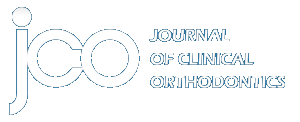Seeing the Light
When we think or talk about any new technology, we usually betray our preoccupation with related past experiences. In the 19th century, travelers named the locomotive the "iron horse" and subsequently called the automobile the "horseless carriage".
Today, we continue to view modern developments through rearview mirrors, having given the name "information superhighway" to the multimedia telecommunication phenomenon that is so much talked about today. Of course, this multifaceted technology hardly resembles a highway, which has predictable linearity, discrete boundaries, and carefully prescribed routes. Nevertheless, the inappropriate metaphor has taken hold, even if it has recently been shortened to "infoway" or "infobahn".
Were you to believe the hype delivered through our media by Wall Street, Hollywood, and cable-TV moguls, you would think the future lay with televisions topped by black boxes. But despite their best efforts to wed us to these outmoded and limited technologies, the heart and soul of the telecommunications revolution will be the computer. Therein lies the potential for rapid progress in orthodontics.
According to the 1993 JCO Orthodontic Practice Study, 73% of U.S. orthodontists had computers in 1992. For most of us, however, these remarkable machines are little more than administrative assistants that keep financial records, write letters, and help schedule our time. Even when we design and employ programs to do other tasks, such as cephalometric tracings and measurements, video imaging, occlusograms, and diagnoses, we seldom, if ever, make use of networks with useful data bases of orthodontic information and experience.
It's hard to imagine orthodontics remaining outside the communications explosion now exemplified by Internet: a confluence of thousands of giant computers around the world, linked together and available not only to each other, but to us as well. The digital technology to permit sharing of orthodontic skills and knowledge already exists, but no one seems to have had the vision or the drive to do much about it in a comprehensive way.
Recently, we've had some hopeful signs that our limited vision of computer use is ending and that, perhaps, an exciting new era of computer utilization has begun.
In the March issue of JCO, Melsen and Fiorelli described a system they developed to instruct orthodontic students and others in biomechanics, diagnosis, and treatment planning. Such Computer-Assisted Instruction (CAI) permits students to learn in a highly specific manner and at a pace that synchronizes with their individual personalities. A multimedia approach also enriches learning by using text and sound along with static and animated imagery. The interaction between user and computer offers enormous advantages in its ability to deliver immediate, accurate, and relevant feedback. Reinforcement is one of the hallmarks of great teaching and learning--regardless of the source.
In this issue of JCO, Doctors Yamada, Hassan, Yamaki, Hanada, Suzuki, and Hara of Japan illustrate how they have simulated orthodontic treatments by using the Macintosh program QuickTime, which creates the computer equivalent of motion pictures.
Orthodontists need this type of intellectual imagination to reach a critical mass of professional curiosity that will result in a cascade of shared ideas, experiences, and data.
In an age when telemedicine allows a physician to complete surgical procedures by robot while hundreds of miles from the operating room, surely orthodontists can use information technology to modernize and improve our profession. We need some universal system by which we can share data bases, exchange e-mail, solicit help for problem cases, access the literature, send and receive all kinds of information (images, text, and sound), stay current through electronic forums, and conduct high-tech research by searching worldwide for related topics.
I think we are just beginning to "see through a glass darkly". When the full light breaks through, I believe our computer screens will enlighten us in ways we can scarcely imagine. It's a great time to be an orthodontist.

